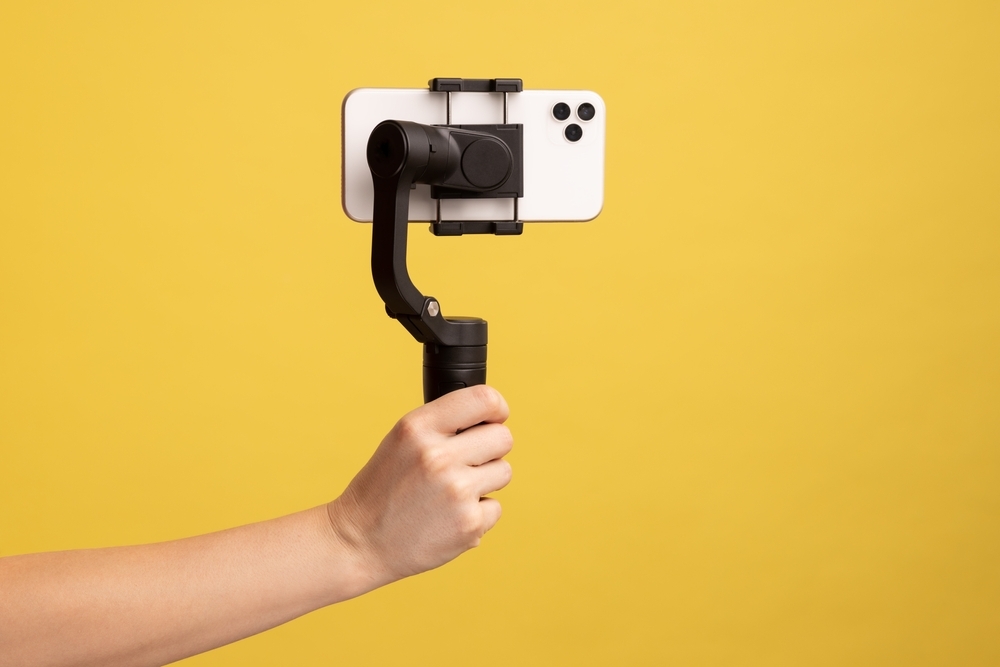
Livestreaming platforms have exploded in popularity in recent years, with many creators broadcasting everything from casual conversations to high-risk “challenge” videos (such as the Blackout Challenge) watched by millions. While most livestreams are harmless entertainment, some creators push boundaries to gain more views, followers, and engagement. Unfortunately, these dangerous trends can inspire real-world injuries. When someone gets hurt while attempting a stunt encouraged or promoted by a livestreamer, an important question emerges: can that creator be held criminally liable?
In Pennsylvania and across the United States, criminal liability depends on the livestreamer’s intent, knowledge, and level of involvement. As digital content grows more extreme, courts are increasingly confronted with cases involving harm caused by online encouragement. Understanding how liability works in these situations helps victims and families know their options after a serious injury.
When Does Online Encouragement Cross the Line Into Criminal Conduct?
Livestreamers cannot be charged simply because someone copied what they saw online. However, criminal liability becomes possible when the creator knowingly encourages, directs, or pressures viewers to participate in harmful behavior.
Several legal theories may apply:
1. Reckless Endangerment
A livestreamer may be criminally liable if they encouraged behavior that created a substantial risk of serious injury, even if they did not intend for someone to get hurt.
2. Solicitation or Conspiracy
If a creator urges viewers to commit illegal acts, they may be charged for encouraging the crime, even if they never physically participated.
3. Criminal Negligence
A creator may be liable if a reasonable person would have recognized that their livestreamed challenge or stunt created a foreseeable risk of harm.
4. Aiding and Abetting
A livestreamer who assists, promotes, or induces a dangerous act may be treated as though they participated directly.
Courts look at context, intent, and the creator’s level of involvement. Even if the livestreamer was not physically present, their online actions may still play a significant role in determining liability.
Factors Prosecutors Consider When Evaluating Criminal Liability
Courts evaluate several questions when deciding whether to charge a livestreamer:
Did the Livestreamer Directly Encourage the Behavior?
Explicit statements like “you should try this,” “I dare you,” or “you won’t do it” carry more weight than passive observation.
Was the Livestreamer Aware That Viewers Might Attempt the Stunt?
If the creator knew minors or vulnerable people followed them, the foreseeability of harm increases.
Did They Promote a Dangerous Challenge as Safe or Harmless?
Creators who minimize the risks or demonstrate stunts without warnings may be viewed as contributing to unsafe behavior.
Was the Livestreamer Benefiting Financially?
If the dangerous content generated revenue, courts may treat the behavior as more intentional.
Did Someone Attempt the Stunt Because of the Livestream?
Clear links between the livestream and the injury strengthen the case for criminal liability.
Examples of Dangerous Livestream Trends That Can Lead to Injury
Recent social media history shows how quickly a viral trend can become a public safety crisis, for example: the Blackout Challenge. This challenge, which has varied in popularity over the past few years, encouraged viewers to asphyxiate themselves until they lost consciousness. The dangerous challenge was extremely popular amongst teens, with many of them describing the loss of consciousness as a feeling of euphoria.
Other examples of dangerous livestream trends include:
- Roof jumping
- High-speed driving challenges
- Consuming hazardous substances, such as Tide Pods
- Self-harm “dares”
- Train-surfing or subway challenges
- Fire-related stunts
- “Extreme shock value” content involving weapons or explosives
In many cases, the injury occurs because viewers believe the stunt is safe or easy, when in reality the risk is severe. With the Blackout Challenge, asphyxiation often leads to serious injuries including oxygen deprivation, cardiac arrest, and death. At the time of publication, it’s believed that more than 100 deaths occurred as a result of this particular social media challenge.
What About Cases Where Livestreamers Harm Someone On Screen?
Some creators broadcast dangerous acts involving other people, such as pranks, assaults, or intimidation. In these situations, criminal charges may include:
- Assault
- Harassment
- Child endangerment
- Soliciting violence
- Cyberbullying offenses
- Recording a crime
Livestreaming does not protect a creator from consequences. If anything, the video becomes strong evidence.
What If the Injured Person Was a Minor?
Pennsylvania takes injuries involving minors especially seriously. If a minor was encouraged or influenced by a livestreamer, charges may include:
- Corruption of minors
- Child endangerment
- Exploitation offenses
- Contributing to delinquency
Courts impose higher penalties when creators target or influence underage viewers.
Civil Liability: Can Victims Sue the Livestreamer?
Criminal charges address punishment, but victims may also pursue civil claims for compensation. A livestreamer may be sued for:
- Negligence
- Reckless misconduct
- Intentional infliction of harm
- Failure to warn
- Encouraging risky behavior
- Creating foreseeable danger
Civil lawsuits may seek damages for:
- Medical bills
- Lost income
- Pain and suffering
- Long-term disability
- Emotional trauma
- Wrongful death
Unlike criminal cases, civil lawsuits only require proof that the livestreamer was more likely than not responsible.
What About the Social Media Platforms? Could They Be Liable?
The answer is it depends. Social media platforms generally receive strong legal protections under Section 230 of the Communications Decency Act, which is a federal law that shields companies from being held responsible for content posted by their users. In most situations, this means platforms cannot be sued simply because someone uploaded a dangerous stunt, encouraged harmful behavior in the comments, or shared violent or illegal content.
However, Section 230 is not an unlimited shield. Courts, legislators, and safety advocates are increasingly examining how platforms contribute to harmful real-world behavior, especially when their design or business practices play an active role in amplifying dangerous content. Although lawsuits against social media platforms remain difficult, several emerging issues may expose them to greater scrutiny, such as:
- Algorithmic promotion of harmful content: Many platforms use recommendation systems that push extreme or risky videos to users, including children and teens. When a platform’s algorithm repeatedly promotes content that encourages dangerous stunts, plaintiffs may argue that the platform helped create or amplify the risk.
- Ignoring reports of dangerous behavior: Platforms receive millions of user reports each year. When they fail to act on credible warnings about hazardous or illegal livestreams, questions arise about whether their inaction contributed to foreseeable harm.
- Failure to remove clearly illegal content: Section 230 does not protect platforms that knowingly facilitate or ignore illegal activity. If content violates criminal laws and remains online despite repeated complaints, a court may view the platform’s inaction as active participation.
- Monetization that incentivizes risky stunts: Many creators earn money through views, subscribers, virtual gifts, or advertising revenue. When platforms financially reward extreme and unsafe content, this may encourage creators to escalate their behavior. In fact, some courts have suggested that monetization tools may fall outside the core protections of Section 230 because they help shape the content ecosystem.
Even though Section 230 remains a powerful defense, modern cases increasingly test how far that protection goes, especially when a platform’s own systems, recommendation tools, or profit incentives help cause or escalate the harm. As social media evolves and dangerous challenges continue to go viral, the legal landscape surrounding platform liability is becoming more complex and less predictable.
What You Should Do If You or a Loved One Was Injured Because of a Livestream
If someone is hurt while attempting a stunt inspired or encouraged to engage in one by a livestream, it is important to take immediate steps:
- Save the livestream or recording
- Document comments, reactions, and viewer engagement
- Identify who posted the video and when
- Preserve any communications or messages
- Seek medical care and keep all records
- Avoid discussing the incident on social media
- Contact an attorney who understands digital evidence
Livestream injuries often involve complex questions about online influence, digital accountability, and foreseeability. Acting quickly helps preserve crucial evidence that may disappear if the livestream is deleted.
Call Anapol Weiss if You Were Injured Because of a Livestreamer’s Dangerous Conduct
If a livestreamer encouraged dangerous behavior that caused serious injury, you are not alone and you have legal options. At Anapol Weiss, our attorneys have extensive experience handling complex personal injury cases involving online platforms, digital content, and unsafe behavior promoted to the public. Our experienced attorneys will investigate what happened, analyze the digital trail, and fight for the compensation you deserve. Contact us today at 215-735-1130 for a free consultation. Your case matters, and the law may hold creators accountable when their influence causes harm.
Disclaimer: This blog is intended for informational purposes only and does not establish an attorney-client relationship. It should not be considered as legal advice. For personalized legal assistance, please consult our team directly.

